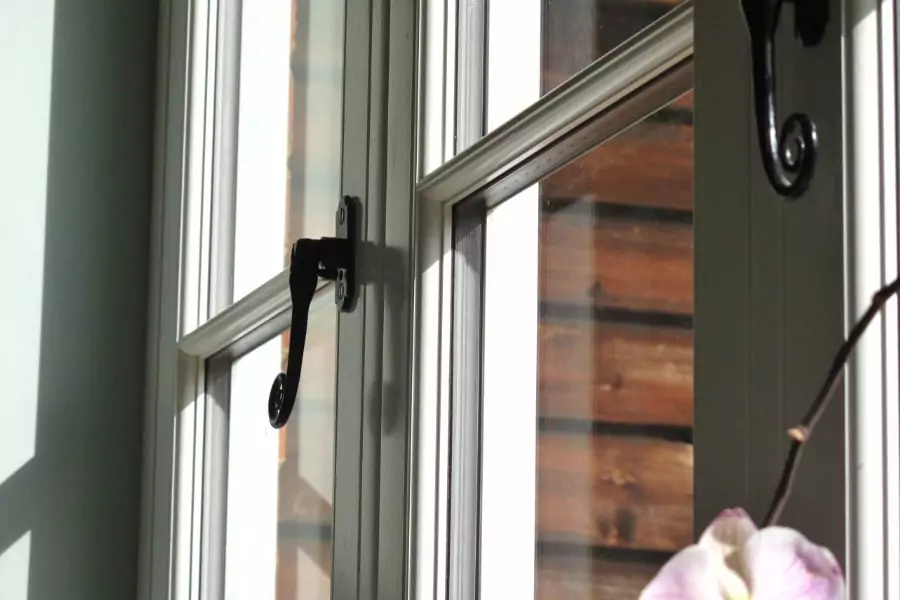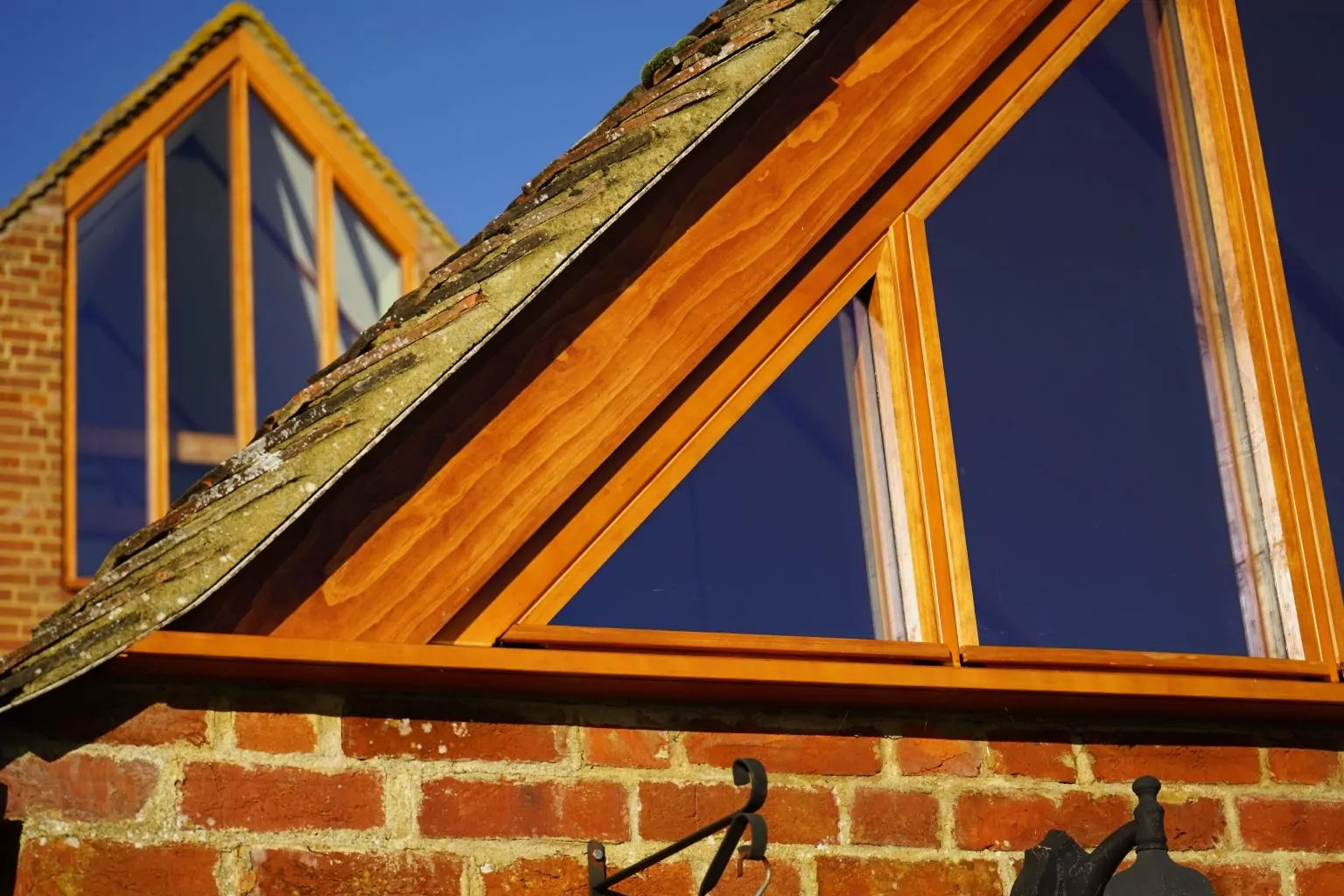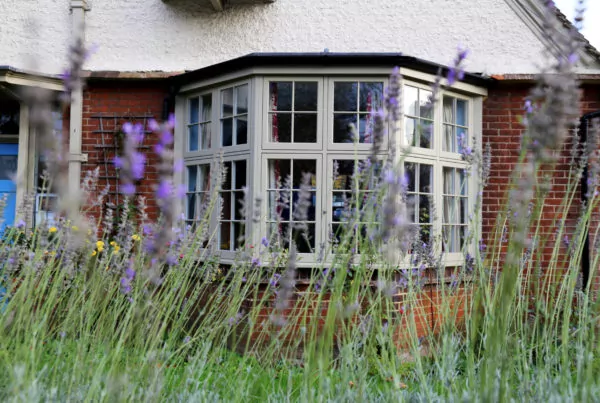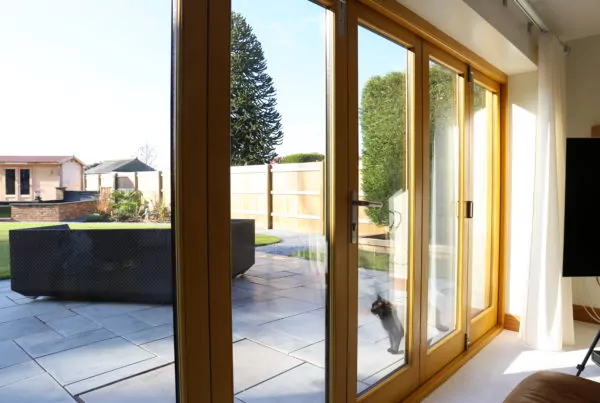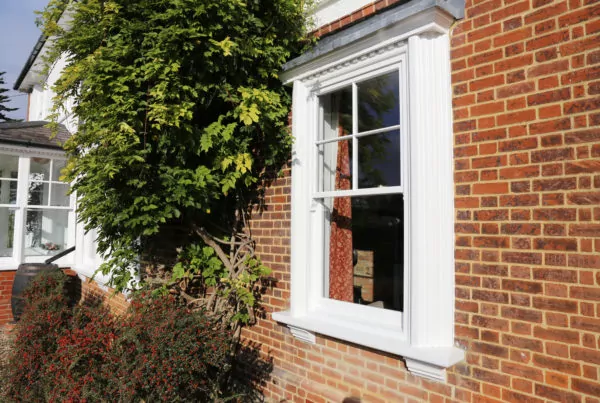Secondary glazing is used to improve the efficiency of windows. It is fitted to the inside of your original window, with its own framework, and operates separately from the window itself.
The reason that secondary glazing is so popular in period properties is largely to do with the conservation department within local councils. They want to keep the authentic appearance of the original windows and often suggest secondary glazing as an alternative way to keep the home warm and draft-free.
However, secondary glazing does have its drawbacks. As well as being awkward to use – since you have to open the secondary glazing before you’ve access to the window – and difficult to clean, these bulky and obtrusive windows can look visually unappealing.
At Andrew Jaynes, we don’t install secondary glazing. We believe there are better ways to improve the thermal efficiency of historic windows and provide alternatives to secondary glazing which can give you greater efficiency, as well as improving the overall aesthetic, inside and out.
We can replace a window with a modern alternative that looks authentic and traditional but with greatly improved thermal performance, or we can replace part of the window. For instance, we can replace the sash windows and keep the box frame, improving the thermal efficiency of the glazing, making sure the frame is fully draft sealed, negating the need for secondary glazing.
Here we’ll provide answers to the most common questions you have about secondary glazing, and look at how a glazing replacement or a complete window replacement can offer a much better finish in your period home.
What is secondary glazing for windows?
Secondary glazing is a retro-fitted frame that is independent of the window itself, and is usually fitted on the inside of an existing window. It is designed to offer an upgrade to the performance of existing traditional timber windows that are cold and draughty
Why is secondary glazing used in listed buildings?
When homeowners want to replace or upgrade the windows in their listed buildings, the local authority conservation department will usually try to steer them towards secondary glazing
The conservation department has a duty to safeguard the historical appearance of our towns and villages. However, their recommendations can sometimes be at odds with the wishes of the homeowner, who wants improved functionality and increased warmth in their homes.
The most common area of debate surrounds the use of double glazing in listed buildings. However, Andrew Jaynes can help. Our wide range of glazing solutions enhance the period character of your home, but without compromising on performance.
If you’re looking for secondary glazing in your home, our advice would be to look into either replacing part or all of the existing windows. As long as the frame of your window is in good condition, it’s possible to replace the glazing of an existing window or the sliding sash part. This will improve the thermal efficiency of your window far better than secondary glazing. It will also be far less obtrusive and far easier to operate.
How effective is secondary glazing?
Secondary glazing does improve the warmth and sound insulation. However, it is visually disruptive to the inside of the windows and can be notoriously difficult to open and clean. It is no coincidence that we frequently replace windows that have had secondary glazing fitted in the past.
There are alternatives to secondary glazing that may be better suited to your needs. Before you invest in secondary glazing, explore your options by consulting a glazing expert like Andrew Jaynes first.
Best alternatives to secondary glazing
1) Complete window replacement
When to use? Where windows are in a poor overall condition or to benefit from the greatest improvement in warmth and functionality
Why choose it? Andrew Jaynes provides complete window replacement on a range of listed buildings in Kent and the surrounding areas. Our windows are designed to offer an authentic traditional appearance but with an overall modern performance that cannot be matched.
How does it work? Your existing windows will be removed and replaced with one of the more efficient timber windows that we manufacture. We regularly install windows in conservation areas and listed buildings and understand exactly what’s involved. We can even obtain planning consent on your behalf.
2) ‘Sash Only’ Replacement
When to use? On single glazed sash windows where the box frames are in fairly good condition. Or where their removal would be overly disruptive.
Why choose it? When the existing box frame is in sound structural condition, you can choose to replace just the sliding sashes fitted into the existing box frame. This takes less time and can be more affordable than a complete window replacement. It is often more efficient to make new fully glazed sashes as opposed to repairing existing ones.
How does it work? The moving sashes are replaced with an upgraded version that incorporates insulated glazing and draught sealing. The existing box frame is retained which minimises any disruption to you during installation.
3) Glazing Upgrade
When to use? When the existing single glazed window is in good structural condition but your home is cold and draughty.
Why choose it? This is a great option when a glazing replacement is needed to improve the efficiency of an existing window without altering the appearance or fabric of the window.
How does it work? Andrew Jaynes will install a revolutionary high-performance vacuum-sealed glazing unit, called Fineo, which has an overall thickness of just 8mm and the same insulation as triple glazing. Alternative “slim profile” double-glazing units are notorious for problems. However, our Fineo glazing units are made to a much higher specification, which is why they come with a 15-year guarantee.
For you, this means your home will stay warm in the winter and cool in the summer, with a notable reduction in the noise from outside.
Contact Andrew Jaynes
To find out more about alternatives to secondary glazing, get in touch with Andrew Jaynes today


